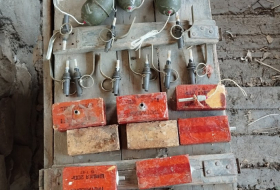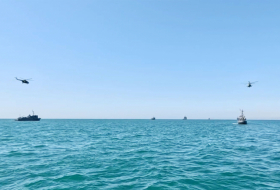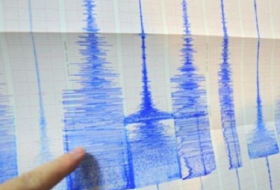Army, defense companies making renewed push for laser weapons

“The Army [has] been working on lasers for a long time,” said Kip Kendrick, chief of the directed energy division at Army’s Space and Missile Defense Command, speaking this week at the Association of the United States Army’s annual exhibition and conference in Washington, D.C.
Efforts began in the 1970s, but scientists have had difficulties developing a weapon that is compact enough to use. The Army has sponsored a number efforts over the years, none of which have yet led to deployed weapons.
With great power comes a great big truck on which to equip the demanding laser system. Getting high-energy lasers mobile required using the largest available Army truck, Kendrick said.
High-energy lasers can, in theory, take down consumer drones, shoot through assault rifles, and destroy small mortars, but it will take more power to have greater wartime applications, experts say.
A badly damaged off-the-shelf drone produced by Chinese drone manufacturer DJI was on display at Kendrick’s talk.
Army said it plans to demonstrate a 100-kilowatt-laser-equipped vehicle in its 2022 fiscal year. That vehicle would target drones and missiles.
The “pre-prototype” vehicle can offer a “cost per kill” of about $30, according to an Army document. Traditional weapons require stockpiles of ammunition, which is costly to produce and transport, but “[t]he high energy laser system requires only fuel to complete its mission,” an Army document said.
The Army is also sponsoring a solid-state laser-equipped combat vehicle. But that vehicle’s laser began at just two kilowatts when it was demonstrated in fiscal year 2016. It upgraded that vehicle’s laser to five kilowatts in December 2016, and said it may upgrade to 10 kilowatts late this year.
Laser weapons are attractive in part because they work more quickly than traditional weapons, Kendrick said. “The instant you fire the laser it will make contact with the target you’re aiming at,” he said.
Interest in laser technology has been sparked in part by the proliferation of cheap, easy-to-obtain drones. The Islamic State, for example, has used small drones to target U.S. special operations forces in Syria.
The Defense Advanced Research Projects Agency (DARPA) wants to be able to deploy a mobile system to combat consumer drones in about three to four years, Foreign Policy reported last week.
Raytheon is offering its own laser to combat small drones: the High Energy Laser MRZR.
“Basically, we’re putting a laser on a dune buggy to knock drones out of the sky,” Ben Allison, director of the company’s high-energy laser product line, said in a statement.
The military needs a low-cost solution for a low-cost problem.
For mobile laser tech merchants at AUSA, the pitch is simple: Don’t use cannons to kill mosquitos. An allied country used a $3 million Patriot missile to take down a $200 consumer drone, according to a Washington Post story in March.
“The Patriot won,” according to Gen. David Perkins, then commander of the U.S. Army Training and Doctrine command, the Post said. But at what cost?
It cost $3 million.















































